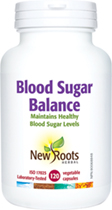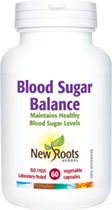The Disease of the Century
Diabetes is certainly going to be one of the most challenging health problems in the 21st century. Currently, 8.8% of Canadians live with diabetes, and approximately 549 new cases are diagnosed each day. Since 2000, the rate has increased by an average of 3.3% per year.[1] Disturbingly, estimates suggest that 1 in 3 children born in 2000 will eventually develop diabetes.[2] The consequences are devastating: Diabetes shortens lives, it is a leading cause of blindness and kidney failure, and it is a significant contributor to the current rise in dementia.
Glucose is the main energy source for our cells. Cells need insulin to utilize glucose. With insulin resistance, our cells do not absorb the glucose, so they go into starvation mode and start getting damaged. Meanwhile, the overabundance of glucose ends up in our bloodstream, causing nerve damage and digestive problems, and predisposing individuals to develop cardiovascular complications.
But There Is Good News: Type 2 Diabetes Is Preventable
Prediabetes—having higher-than-normal blood-sugar levels, but not yet high enough to be considered diabetes—is considered reversible. Currently, six million Canadians have prediabetes.[3] Insulin resistance, as seen in type 2 diabetes, is largely acquired and is a lifestyle-related disorder closely associated with poor dietary habits, lack of physical activity, and obesity.
You are at risk for developing prediabetes if you:[4]
- are overweight;
- are 45 years or older;
- have ever had gestational diabetes (during pregnancy) or given birth to a baby who weighed more than 9 pounds;
- have a parent, brother, or sister with type 2 diabetes;
- are physically active less than 3 times a week; or
- are African American, Hispanic/Latino American; from a First Nation, or an Alaska Native.
Weight management is becoming an increasingly common problem, to the point where obesity is the most preventable disease in Canada. In 2020, around 28% of Canadian adults were obese, while 36% were overweight.[5] Obesity is a leading cause of type 2 diabetes.
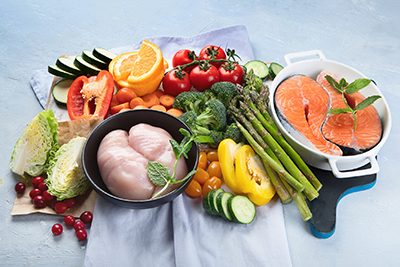 Nutrition is also paramount for the prevention of diabetes. The glycemic load of food—or the amount of glucose the tissues in the body are exposed to after a certain food is ingested—is one of the key factors to consider. Sugary foods associated with a high glycemic load result in greater tissue exposure to glucose. Several studies have documented that a diet producing a high glycemic load is strongly associated with the development of type 2 diabetes.
Nutrition is also paramount for the prevention of diabetes. The glycemic load of food—or the amount of glucose the tissues in the body are exposed to after a certain food is ingested—is one of the key factors to consider. Sugary foods associated with a high glycemic load result in greater tissue exposure to glucose. Several studies have documented that a diet producing a high glycemic load is strongly associated with the development of type 2 diabetes.
High v. Low Glycemic Load Foods
- High: White rice, white bread, pasta, raisins, potato chips, sugary desserts, and pizza.
- Low: Carrots, oranges, nuts, apples, popcorn, most vegetables, meat, fish, chicken, eggs, hummus, and legumes.
Exercise improves glucose metabolism and insulin sensitivity, thereby reducing the risk of diabetes and heart disease. The US Diabetes Prevention Program study demonstrated that 30 minutes of daily physical activity and a 5–10% body weight loss resulted in a 58% reduction in the risk of developing diabetes.[6]
The prevention of diabetes is no different than the prevention of most chronic diseases: Sound nutrition, exercise, and a healthy lifestyle go a long way. Natural treatments and nutritional supplements can also help prevent and address insulin resistance.
Nutrients such as inositol, curcumin, cinnamon, and resveratrol can improve insulin sensitivity, lower blood sugar levels, assist in weight loss, and reduce the risk of developing type 2 diabetes.
myo-Inositol
This sugar alcohol (also called vitamin B7) is found in foods such as grains, corn, meat, citrus fruits, and legumes. Studies show that therapeutic levels of inositol have an insulin-sensitizing effect.[7]
Research also shows that inositol supplementation is particularly helpful at preventing the progression from metabolic syndrome (also known as insulin resistance syndrome) to type 2 diabetes by reducing total cholesterol, triglycerides, and blood pressure, while increasing high-density lipoprotein (HDL) cholesterol.[8]
Defects in the metabolism of inositol are thought to lead to insulin resistance, notably in patients with polycystic ovarian syndrome (PCOS). Researchers think that inositol helps to induce ovulation in these patients by improving insulin sensitivity.[9]
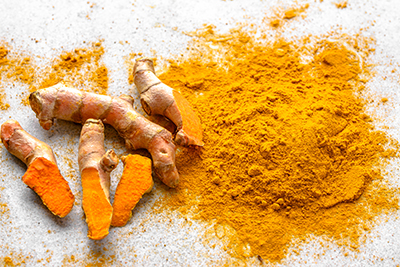 Curcumin
Curcumin
Derived from turmeric—a common spice in Asian cuisine and culture—curcumin is the yellow-coloured active constituent of the root. Curcumin has a long history of use in traditional Asian and Indian medicine.
Research in patients with diabetes shows that taking curcumin daily for 12 weeks reduces fasting blood glucose when compared with placebo.[10] Research also shows that curcumin can significantly help prevent the progression from metabolic syndrome to diabetes. In overweight or obese individuals with prediabetes, clinical research shows that taking curcumin for 90 days improves insulin sensitivity and results in a reduction in fasting glucose and glycated hemoglobin when compared with placebo.[11]
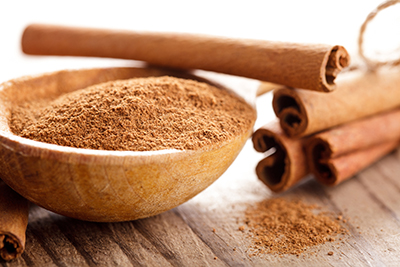 Cinnamon
Cinnamon
Cinnamon is the bark of a tropical evergreen tree which grows in Sri Lanka, Southern India, and Madagascar. Some in-lab and animal research show that cinnamon has antidiabetic effects. Animal research shows that cinnamon can help improve weight loss, blood glucose, hemoglobin A1c (HbA1c), insulin levels, and blood lipids in patients with diabetes.[12] One small clinical study in adults with poorly controlled type 2 diabetes treated with metformin showed a trend toward improvement in fasting blood glucose with cinnamon supplementation.[13]
Resveratrol
Resveratrol is a naturally occurring polyphenol. It is primarily found in red wine, red grape skins, purple grape juice, and mulberries. Resveratrol is beneficial for weight loss in overweight or obese individuals. Studies also show that in type 2 diabetics, resveratrol can lower fasting blood glucose levels, fasting insulin, and HbA1c.[14], [15]
Simple interventions can make a remarkable difference when it comes to preventing the progression from prediabetes to diabetes. More than 15% of the Canadian population is currently at risk for the development of diabetes. It is time to start exercising more, reduce simple sugars in your diet, and consider supplementation with nutraceuticals such as curcumin, cinnamon, resveratrol, and myo-inositol.
 Dr. Ludovic Brunel, ND
Dr. Ludovic Brunel, ND
Dr. Brunel has 15+ years of experience as a naturopathic doctor and practices in Calgary. His approach has always been to improve health outcomes by relying on the best research available.
elevatedhealthcare.ca
[1] LeBlanc, A.G., Y.J. Gao, L. McRae, and C. Pelletier. “At-a-glance - Twenty years of diabetes surveillance using the Canadian Chronic Disease Surveillance System.” Health Promotion and Chronic Disease Prevention Canada, Vol. 39, No. 11 (2019): 306–309.
[2] Gruber, A., K. Nasser, R. Smith, J.C. Sharma, and G.A. Thomson. “Diabetes prevention: Is there more to it than lifestyle changes?” International Journal of Clinical Practice, Vol. 60, No. 5 (2006): 590–594.
[3] [No author listed.] “Prediabetes.” Diabetes Canada · https://www.diabetes/recently-diagnosed/prediabetes-toolkit · 2022.
[4] [No author listed.] “Diabetes risk factors.” Centers for Disease Control and Prevention · https://www.cdc.gov/diabetes/basics/risk-factors.html · Reviewed 2022-04-05.
[5] Elflein, J. “Percent of overweight or obese Canadian adults based on BMI 2015-2020.” Statista.com · 2021-10-25.
[6] Ratner, R.E., for the Diabetes Prevention Program Research Group. “An update on the Diabetes Prevention Program.” Endocrine Practice, Vol. 12, Suppl. 1 (2006): 20–24.
[7] Tagliaferri, V., D. Romualdi, V. Immediata, S. De Cicco, C. Di Florio, A. Lanzone, and M. Guido. “Metformin vs myoinositol: Which is better in obese polycystic ovary syndrome patients? A randomized controlled crossover study.” Clinical Endocrinology, Vol. 86, No. 5 (2017): 725–730.
[8] Santamaria, A., D. Giordano, F. Corrado, B. Pintaudi, M.L. Interdonato, G.Di Vieste, A. Di Benedetto, and R. D’Anna. “One-year effects of myo-inositol supplementation in postmenopausal women with metabolic syndrome.” Climacteric, Vol. 15, No. 5 (2012): 490–495.
[9] Crawford, T.J., C.A. Crowther, J. Alsweiler, and J. Brown. “Antenatal dietary supplementation with myo-inositol in women during pregnancy for preventing gestational diabetes.” The Cochrane Database of Systematic Reviews, No. 12 (2015): CD011507.
[10] Shafabakhsh, R., Z. Asemi, Z. Reiner, A. Soleimani, E. Aghadavod, and F. Bahmani. “The effects of nano-curcumin on metabolic status in patients with diabetes on hemodialysis, a randomized, double blind, placebo-controlled trial.” Iranian Journal of Kidney Diseases, Vol. 14, No. 4 (2020): 290–299.
[11] Karandish, M., H. Mozaffari-Khosravi, S.M. Mohammadi, B. Cheraghian, and M. Azhdari. “The effect of curcumin and zinc co-supplementation on glycemic parameters in overweight or obese prediabetic subjects: A phase 2 randomized, placebo-controlled trial with a multi-arm, parallel-group design.” Phytotherapy Research, Vol. 35, No. 8 (2021): 4377–4387.
[12] Ranasinghe, P., R. Jayawardana, P. Galappaththy, G.R. Constantine, N. de Vas Gunawardana, and P. Katulanda. “Efficacy and safety of ‘true’ cinnamon (Cinnamomum zeylanicum) as a pharmaceutical agent in diabetes: A systematic review and meta-analysis.” Diabetic Medicine, Vol. 29, No. 12 (2012): 1480–1492.
[13] Talaei, B., A. Amouzegar, S. Sahranavard, M. Hedayati, P. Mirmiran, and F. Azizi. “Effects of cinnamon consumption on glycemic indicators, advanced glycation end products, and antioxidant status in type 2 diabetic patients.” Nutrients, Vol. 9, No. 9 (2017): 991.
[14] Liu, K., R. Zhou, B. Wang, and M.T. Mi. “Effect of resveratrol on glucose control and insulin sensitivity: A meta-analysis of 11 randomized controlled trials.” The American Journal of Clinical Nutrition, Vol. 99, No. 6 (2014): 1510–1519.
[15] Sattarinezhad, A., J. Roozbeh, B. Shirazi Yeganeh, G.R. Omrani, and M. Shams. “Resveratrol reduces albuminuria in diabetic nephropathy: A randomized double-blind placebo-controlled clinical trial.” Diabetes & Metabolism, Vol. 45, No. 1 (2019): 53–59.

 Stores
Stores
